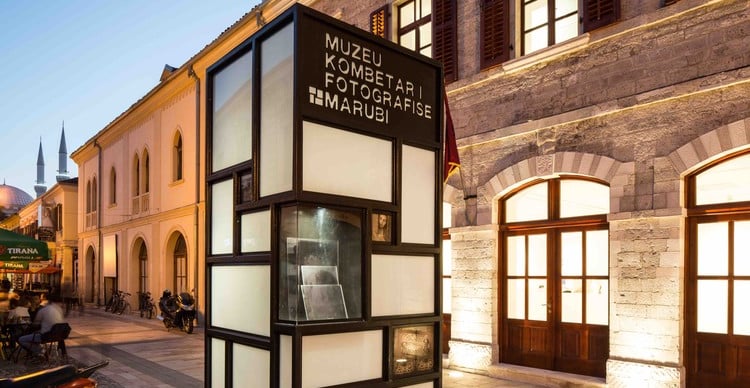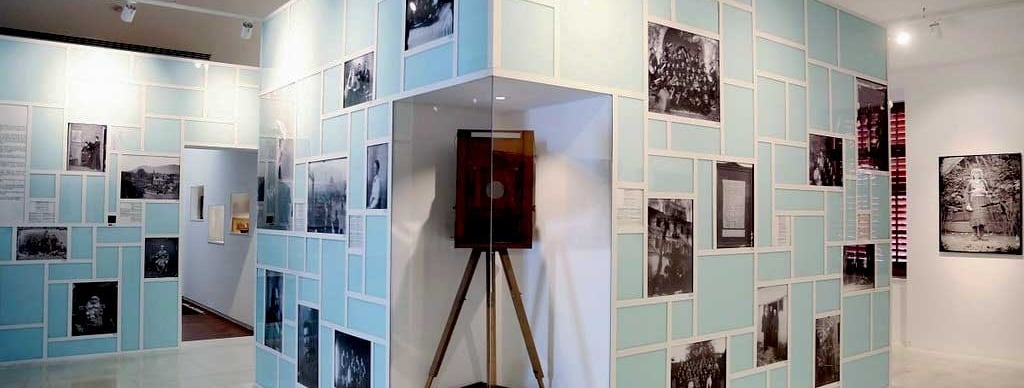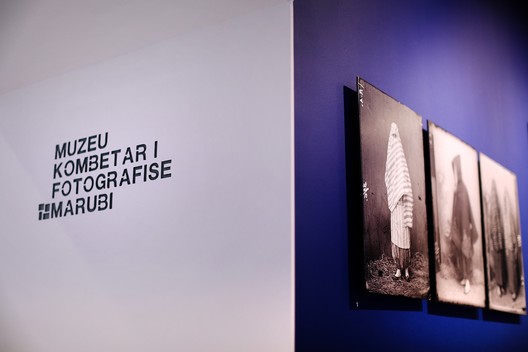Marubi National Museum of Photography: Through the Lens of Albania’s Forgotten Faces
An arresting journey through 500,000 frozen moments that capture the soul of a nation.


Where Shadows Whisper and Silver Halides Remember
There are museums that house artifacts. Others, paintings. A few, bones. But in the heart of Shkodra, Albania, lies a place where light and time have conspired to give us something far more intimate—memories. The Marubi National Museum of Photography isn’t just a museum; it’s a vault of gazes, gestures, grief, and grandeur. It is a symphony of silver prints, a celebration of faces otherwise lost to time.
Most visitors to Albania are drawn to the beaches of the south, the Ottoman architecture of Berat, or the lively boulevards of Tirana. But if you're in search of stories—raw, real, unfiltered—Marubi is your pilgrimage. Because what Marubi offers isn’t simply “Albania in pictures.” It offers Albania in truths, captured before Photoshop, filters, or finesse.
A Family Affair With Shuttered Souls
The Marubi dynasty began, quite unexpectedly, with an Italian political exile: Pietro Marubi, a painter and photographist who fled from Piacenza after being entangled in an anti-monarchist plot in the 1850s. He crossed the Adriatic and landed in Shkodra, then a thriving city under Ottoman rule with a bustling intellectual life and a thirst for the modern.
Once there, he traded paintbrushes for plates of glass. In 1856, he opened the Dritëshkronja (literally, the “writing with light”)—Albania’s first photography studio. What began as a curious foreigner’s art experiment soon became the most important visual archive in the Balkans.
And this was only the beginning.
Pietro, having no children of his own, passed the craft to his young apprentice Mikel Kodheli, whom he renamed Kel Marubi in his honor. Thus was born the Marubi School, a succession of photographers spanning three generations—Pietro, Kel, and later Gege Marubi, Kel’s son—who chronicled not just personal commissions but epochal shifts: the fall of the Ottoman Empire, Albanian independence, the World Wars, the rise of communism.
This isn't just a collection of photographs. It's an autobiography of Albania, written in light and chemistry.
Through Their Eyes: A People's Portrait
What does it mean to photograph a people?
Kel Marubi's portraits are more than stiff studio poses; they are windows into the ambitions, egos, anxieties, and ideals of an emergent Albanian identity. You’ll find bejtexhinj (folk poets) clutching their hand-written verses, Rilindas (national revivalists) with steely revolutionary eyes, Muslim clerics, Catholic bishops, brides in heavy gold-threaded veils, and peasants in the embroidered majesty of their regional attire.
The detail is stunning. The clothes reveal the intricacies of Ottoman-Albanian design, the jewelry tells of social standing, and the expressions often defy what we expect of 19th-century photography—they are human, spontaneous, even humorous.
Kel was also the first Albanian photographer to study abroad, training in Lyon and bringing back the first celluloid film and camera obscura to the Balkans. Meanwhile, his son Gege, who was educated in Paris, pushed the boundaries further with reportage photography, documenting everything from industrial labor to women’s rights campaigns.
Fast forward to the 20th century, and the archive becomes darker, more complex. The smiles are rarer. The backdrop is no longer just a curtain or a garden bench—it’s war, poverty, and ideology. You move from velvet to concrete. Yet the light endures.
The Architecture of Memory
The current museum is a marvel of contemporary architecture. Opened in 2016 in the very building where the Marubi studio operated, it was designed by Casanova+Hernandez, a Dutch architecture firm known for reimagining cultural spaces.
They didn’t just renovate—they resurrected.
The museum offers not only a meticulously curated permanent collection but also temporary exhibitions, digital stations, educational programs, and archival laboratories where conservators restore decaying negatives. It’s a place where history isn’t entombed but revived.
As you walk through the clean glass-and-metal galleries, there’s an eerie sense that these long-dead Albanians are watching you. A woman in a qeleshe and hand-woven vest stares through 120 years of dust and geopolitics. A boy with a wooden toy gun glares like he might still shoot. A bride clutches her belt as if worried you’ll steal it. These images are so alive they bite.
Practical Information
Location:
Rruga Kolë Idromeno 32, Shkodër, Albania
Opening Hours:
Tuesday to Sunday, 9:00 AM – 7:00 PM
Closed on Mondays and public holidays.
Ticket Prices:
Adults: 700 ALL (approx. €7)
Students & Seniors: 300 ALL
Children under 12: Free
Family tickets and group tours available
How to Get There:
From Tirana, take a bus or furgon (shared minivan) to Shkodra (approx. 2.5 hours). The museum is in the pedestrian zone of the old town—impossible to miss if you're walking from the central boulevard.
Language Support:
Museum displays and labels are in Albanian and English. Staff speak English and Italian. Guided tours in multiple languages can be arranged.
Photography:
Yes, you can take photos inside. Just no flash. Remember, you’re photographing photographs—let the ghosts rest gently.
Facilities:
Gift shop with Marubi prints, postcards, and photo books
Reading room and research access by appointment
Accessible for people with limited mobility
Small café next door serving espresso and raki (not mixed, thankfully)
For more information and to view the digital archive: https://www.marubi.gov.al


What Makes Marubi Unique?
The Scale: Over 500,000 photographs, ranging from glass plates and film rolls to cellulose and digital scans.
The Span: The archive covers 1856 to 1989, capturing pre-industrial life, early urbanization, resistance movements, and the entire communist era.
The Depth: Every image is a story. Some are formal portraits, others candid slices of daily life. You’ll see wedding feasts, deathbed vigils, military parades, and schoolchildren reciting from the blackboard.
The Technology: You’ll witness the evolution of photography itself—from collodion wet plates to gelatin dry plates to 35mm film—right inside the museum.
The Rarity: Many of these photographs exist nowhere else. The Marubi family often developed images of events for which no written record exists. It is Albania’s unofficial, analog memory drive.
Not Just Albania: The Pan-Balkan Legacy
One of the more surprising aspects of the Marubi collection is how interconnected it is with the rest of the region. The studio wasn’t limited to Albanians. There are photographs of Montenegrins, Serbs, Bosniaks, Vlachs, Jews, and Italians. Shkodra, after all, was a node in a complex web of trade, religion, and conflict. The Marubi negatives are Balkanism in the flesh—sometimes proud, sometimes tragic, always layered.
There are even images of international figures—French officers, Ottoman generals, Austro-Hungarian bureaucrats—all passing through the lens of Shkodra. Marubi didn’t care for borders. He cared for moments.
A Few Standouts You Shouldn’t Miss
Luigj Gurakuqi’s Portrait: One of the key figures of the Albanian National Awakening, this is no ordinary studio shot. It feels cinematic, almost staged like a Vermeer painting.
Photograph of Edith Durham in Northern Albania: The famous British anthropologist is captured in traditional clothing, half-insider, half-outsider.
The Bride of Kelmend: Adorned with local jewelry and a stare that could dissolve granite, this photograph is perhaps the most iconic in the collection.
Schoolgirls of 1930s Shkodra: A haunting reminder that modernity, even under dictatorship, had its quiet revolutions.
The Communist-Era Reportage: Don’t skip these. Propagandistic, yes, but they contain visual clues to daily life in one of Europe’s most closed regimes.
The Philosophy of Looking
Visiting Marubi invites more than appreciation—it provokes self-reflection. What does it mean to pose? Why do we fear forgetting? How do we read the emotions of people who lived 150 years ago, and why do we care?
Photographs may lie, but they also confess.
The Marubi Museum isn’t here to glorify the past. It exists to complicate it. Every image questions your assumptions. Every photo resists being "just a photo." These aren't moments stolen from time. They are negotiations with it.








